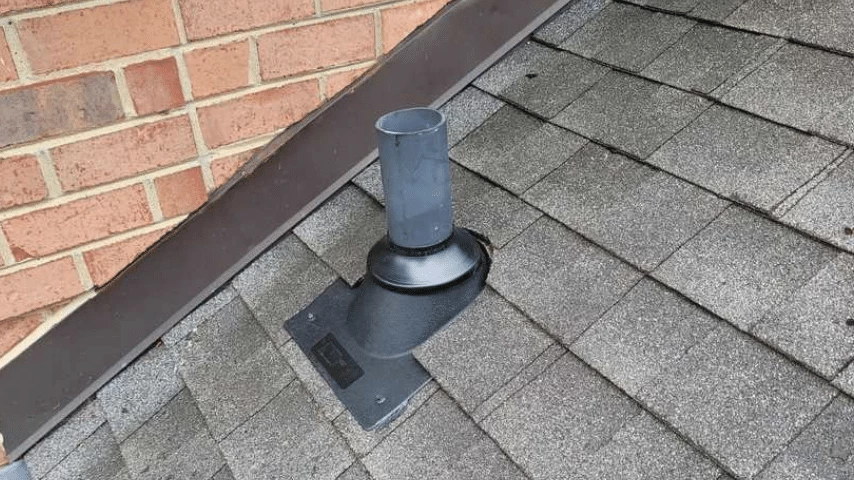
Hailstorms can be one of the most intimidating weather events that homeowners face. The sound of ice pounding against your roof can be alarming, but the true danger lies in the damage that isn’t always visible to the naked eye.
While hailstones can leave behind clear, visible damage to shingles, gutters, and other parts of your roof, there are many instances where hailstorm leaks weaken your roof without leaving any obvious signs. This hidden damage can cause serious problems down the road, and most homeowners don’t realize the threat until it’s too late.
Let’s take a closer look at how hailstorm leaks can impact your roof, even when there’s no visible damage, and why it’s important to keep an eye out for the subtle signs that could lead to more serious problems.
How Can Hailstorm Leaks Weaken a Roof Without Leaving Visible Signs?
At first glance, after a hailstorm, everything might seem fine. Your roof may look intact with no apparent cracks or holes. However, the impact of the hailstones doesn’t always leave a visible mark. In fact, hail can cause leaks and damage that slowly deteriorates your roof without showing any immediate visible signs.
Here’s how this process unfolds:
- Invisible Cracks in Shingles: Hailstones are hard and dense, and when they strike your roof, they can create small, invisible cracks in your shingles. These cracks may be too tiny to spot with the naked eye, but over time, they allow water to seep beneath the shingles and into your roof’s layers. While there might be no visible holes or dents, the water infiltration starts a process of deterioration inside the roofing materials.
- Compromised Sealants and Underlayment: Roofs have sealants that help prevent water from seeping into vulnerable areas. Hail can compromise these sealants and cause them to break down, creating minute gaps that water can slowly work its way through. This can lead to leaks under the surface of your roof that may not show up until the damage becomes more extensive.
- Granule Loss: Asphalt shingles, commonly used in many residential roofs, are covered with a protective layer of granules that help reflect the sun’s UV rays and protect the shingles from weather damage. Hail can cause these granules to loosen and wash away. While you might not notice this immediately, the loss of granules weakens the shingles, making them more susceptible to water penetration.
- Damage to Roof Flashing: Flashing is used to seal joints and edges of the roof, especially around chimneys, vents, and skylights. Hail can damage the flashing, leading to subtle leaks that are difficult to detect. The flashing may not show obvious signs of damage, but it can allow water to infiltrate the roof, which eventually leads to more serious structural problems.
What are the Hidden Risks of Hailstorm Leaks on a Roof?
Even though the damage caused by hailstorms may not be immediately visible, the long-term effects of unnoticed leaks can be far-reaching. The hidden risks of hailstorm leaks include:
- Water Damage to Roof Decking and Insulation: Once water starts seeping through tiny cracks or compromised underlayment, it can reach the roof decking (the wooden structure beneath the shingles). Prolonged exposure to moisture can lead to rotting of the decking, weakening the entire structure of your roof. This can also affect the insulation underneath your roof, leading to mold and mildew growth that could create serious health hazards.
- Increased Risk of Mold and Mildew: Water leaks that go unnoticed can lead to the growth of mold and mildew inside the walls and ceilings of your home. Mold thrives in moist, warm environments, and a leaking roof provides the perfect breeding ground. Not only does mold damage your home’s structure, but it can also affect the air quality inside your home, causing health problems for the residents.
- Compromised Roof Integrity: Over time, hailstorm-related leaks can weaken your roof’s structural integrity. The constant exposure to water can cause the roofing materials to break down, leading to sagging, warping, or even collapse in extreme cases. These problems may not show up for months or even years, but when they do, the cost of repairs will be much higher than if the leaks had been addressed earlier.
- Wood Rot and Structural Damage: Moisture that seeps into the roofing structure can spread to the wooden framing and other components of your home. This can lead to wood rot, which weakens the structural framework of your roof and home. The longer the problem persists, the more extensive the damage becomes, and it can eventually compromise the overall safety of your house.
- Increased Energy Bills: A weakened roof that allows air to escape or moisture to build up can reduce the energy efficiency of your home. A compromised roof may let in hot or cold air, forcing your HVAC system to work harder to maintain the desired temperature. As a result, you could see a noticeable increase in your energy bills. In addition, moisture buildup in your attic can affect insulation, making it less effective.
Why Do Some Hailstorm-Related Roof Leaks Go Unnoticed For Months?
One of the most frustrating aspects of hailstorm-related roof leaks is that they often go unnoticed for months or even years. This is especially true when the damage isn’t immediately visible, leaving homeowners unaware of the issues that are slowly deteriorating their roof. There are several reasons why these leaks go unnoticed for such long periods:
- Slow Water Infiltration: Unlike a dramatic leak from a major storm, hailstorm leaks can start small and progress very slowly. Water might only trickle into your roof in the early stages, not showing up as a significant issue for a while. It can take weeks or even months for the effects to become noticeable—by which time the damage could be quite severe.
- Hidden Roof Areas: Some areas of your roof, such as the attic or the roof’s underlayment, are difficult to inspect without professional help. If you don’t regularly check for leaks in these areas, it can be easy to overlook the signs of water damage. Moisture buildup in the attic can go unnoticed until it has caused significant structural or mold damage.
- Minimal or No Visible Damage: As mentioned earlier, hail can cause tiny cracks or damage to the roof that isn’t visible from the outside. This means that even if you inspect your roof after a hailstorm, you might not spot any damage. It’s only when leaks begin to cause water damage in the interior of your home that the problem becomes apparent.
- Homeowners Not Knowing What to Look For: Many homeowners are unfamiliar with the early warning signs of roof leaks or the subtle damage that can be caused by hail. Without a trained eye, it can be difficult to detect these problems early on. It’s not until the damage becomes more severe—such as staining on the ceiling or noticeable water pooling—that homeowners realize something is wrong.
How Does Water Seepage From Hail Damage Affect a Roof’s Structure Over Time?
Water seepage caused by hail damage doesn’t just affect the cosmetic appearance of your roof—it has a direct impact on the roof’s structure. Even if you don’t see any obvious signs of water infiltration, the effects of prolonged moisture exposure can be devastating:
- Wood Rot and Deterioration: When water seeps into the roof’s wooden structure, it causes the wood to weaken and rot over time. This degradation can lead to sagging or even collapse if the water damage is left unaddressed. The longer the water seeps, the more extensive the damage becomes, and the cost of repairs increases.
- Deterioration of Roof Decking: As the roof decking absorbs moisture, it can warp and buckle, leading to more significant structural damage. The roof decking serves as the foundation for the entire roofing system, so any weakness in this area can have a ripple effect throughout the roof’s integrity.
- Increased Pressure on Roof Support Beams: Prolonged water damage can also cause pressure on the roof’s support beams. The weight of water-soaked materials can cause these beams to bend or crack, leading to potential structural failure if left unchecked.
- Failure of Insulation: Roof leaks can cause insulation to become waterlogged, rendering it ineffective. Insulation that becomes wet will need to be replaced, which can be a costly and time-consuming process. Furthermore, poor insulation can cause temperature fluctuations in your home, making it harder to maintain a comfortable indoor environment.
Don’t Let Hidden Hailstorm Leaks Cause Lasting Damage
Hailstorm leaks may not always present themselves immediately, but the longer they go unnoticed, the more damage they can cause to your roof and your home’s structure. Whether it’s weakening the integrity of your roof, causing mold growth, or leading to wood rot, hail-related water damage is a slow but steady threat that every homeowner should take seriously.
The key to protecting your home is regular roof inspections, especially after a hailstorm. If you notice any signs of water infiltration or suspect that your roof has been affected, it’s essential to call in a professional to assess the situation.
Don’t let hidden hailstorm damage sneak up on you—keep your roof strong, healthy, and leak-free with routine maintenance and timely repairs. Your roof is one of the most important investments in your home, so take action before the damage gets worse.
Protect Your Home from Hidden Hail Damage with Eason Roofing!
At Eason Roofing, we specialize in identifying and repairing hidden hailstorm damage that can silently weaken your roof over time. Don’t wait until leaks and structural damage become major problems—our expert team is ready to inspect your roof and provide the necessary repairs to keep your home safe and secure.
Schedule your roof inspection with Eason Roofing today and ensure your roof is prepared for whatever weather comes next. Let us help you protect your home and investment—contact us now!


